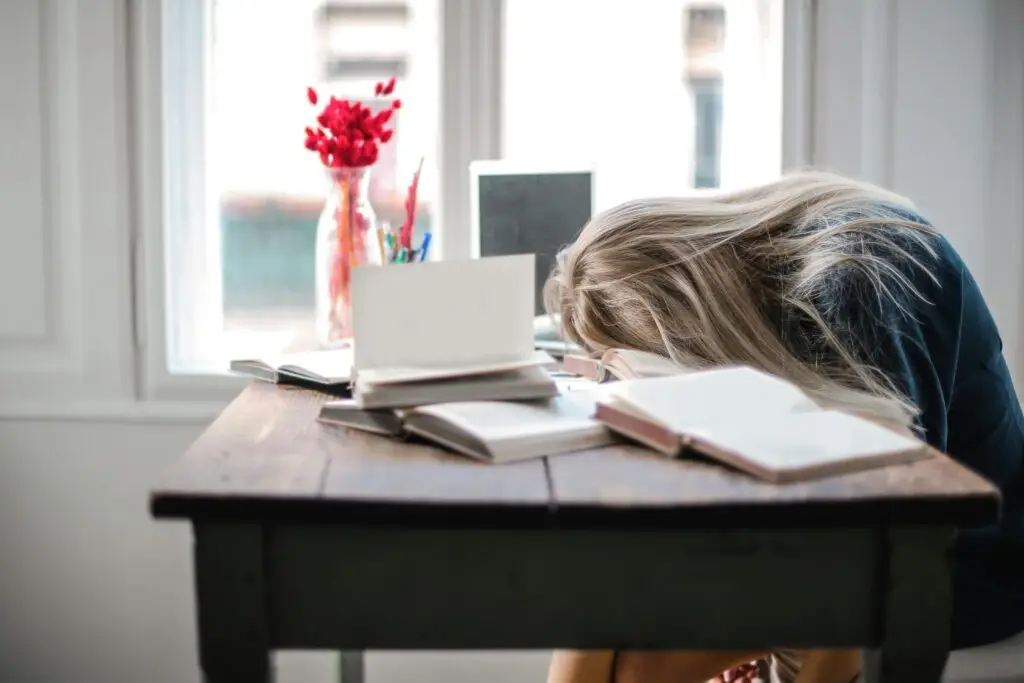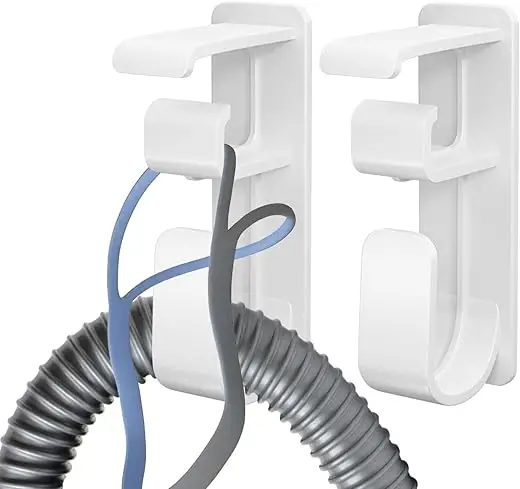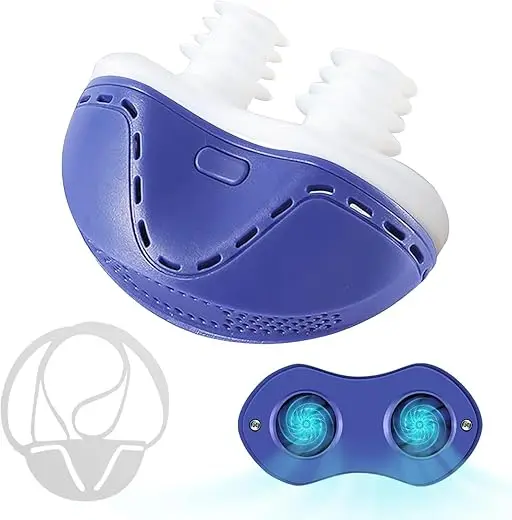Understanding Sleep Apnea Masks
Did you know that approximately 22 million Americans suffer from sleep apnea, a serious disorder that can significantly impact health and quality of life? This condition causes breathing interruptions during sleep, often leading to excessive daytime drowsiness and increased risks of heart disease, diabetes, and more.
For many, the solution lies in the use of sleep apnea masks. These masks are designed to help individuals with sleep apnea breathe more easily at night, ensuring they receive the restorative sleep their bodies crave. By addressing breathing pauses effectively, these masks can transform lives, improving both sleep quality and overall health.
As we delve deeper into the world of sleep apnea masks, we’ll explore their various types, how to choose the right one, and essential maintenance tips. Understanding these aspects can empower you or your loved ones to reclaim restful sleep and a healthier lifestyle.




What is Sleep Apnea?
Sleep apnea is a common yet potentially serious sleep disorder characterized by repeated interruptions in breathing during sleep. The two most prevalent types of sleep apnea are:
Obstructive Sleep Apnea (OSA)
This is the most common form, where throat muscles intermittently relax and block the airway during sleep. Symptoms may include loud snoring, gasping, or choking noises, often noticed by a partner.
Central Sleep Apnea (CSA)
Unlike OSA, CSA occurs when the brain fails to send proper signals to the muscles that control breathing. This type is less common but can be equally disruptive.
Complex Sleep Apnea Syndrome
Also known as treatment-emergent central sleep apnea, this condition is a combination of obstructive and central sleep apneas, presenting unique challenges in diagnosis and management.
Symptoms and Impact
Common symptoms of sleep apnea include:
Sleep apnea doesn’t just disrupt sleep; it can lead to severe health issues over time. Individuals with untreated sleep apnea face risks like cardiovascular problems, metabolic disorders, and complications with medications and surgery.
In light of these serious implications, many who endure this condition find relief through the use of specialized devices. In the next section, we will explore how sleep apnea masks play a crucial role in managing these disruptions effectively.
The Role of Sleep Apnea Masks
Sleep apnea masks are not just simple accessories; they serve a critical function in combatting one of the most disruptive sleep disorders. Central to their effectiveness is Continuous Positive Airway Pressure (CPAP) therapy, which utilizes a mask connected to a CPAP machine. This device emits a continuous stream of air that keeps the airway open, significantly reducing the likelihood of breathing interruptions during sleep.
How CPAP Therapy Works
When someone with sleep apnea falls asleep, their throat muscles can relax excessively, blocking the airway. A sleep apnea mask delivers a gentle flow of air that counteracts this relaxation, ensuring that air can flow freely to the lungs. By maintaining an open airway, the mask helps improve oxygen flow and decrease the number of apneic episodes throughout the night. According to studies, effective CPAP therapy can lead to up to a 50% reduction in sleep apnea symptoms, allowing users to experience more restorative sleep.
Real-World Impact
Consider the story of Jessica, a 34-year-old mother who struggled with daytime fatigue due to undiagnosed sleep apnea. Once she began using a CPAP mask, her quality of life transformed. Not only did she gain energy during the day, but she also reported improved mood and focus—positive changes that affected both her personal and professional life.
The effectiveness of these masks is not only in their design but also in the way they integrate into one’s nightly routine, turning what was once a challenge into a manageable part of life.
As we explore the next section, we’ll look at the various types of sleep apnea masks available, each catering to different needs and preferences, ensuring everyone can find a suitable solution.
Types of Sleep Apnea Masks
When it comes to managing sleep apnea, selecting the right mask can make all the difference. Each type of mask offers unique benefits and drawbacks, catering to diverse preferences and comfort levels. Here’s an overview of the most common types of sleep apnea masks available:
Nasal Masks
Nasal masks cover the nose and deliver pressurized air directly through the nostrils. They are lightweight and provide a wide field of vision, which can be beneficial for those who feel claustrophobic.
Advantages:
Disadvantages:
Full-Face Masks
Full-face masks cover both the mouth and nose, making them a suitable option for individuals who breathe through their mouth, especially those with nasal blockages.
Advantages:
Disadvantages:
Nasal Pillows
Nasal pillows consist of small, soft cushions that fit directly into the nostrils. They are known for their minimalistic design and are often favored by those who feel restricted by larger masks.
Advantages:
Disadvantages:
Choosing the right type of mask is crucial for ensuring compliance with CPAP therapy and improving overall sleep quality. Individual preferences, breathing habits, and comfort needs should all be taken into consideration when assessing these options. With an understanding of the various types of masks available, the next step is determining which one suits you best, as we will explore in the following section.
Choosing the Right Mask
Selecting the right sleep apnea mask can significantly impact your comfort and adherence to therapy. With various types of masks available, it’s essential to consider factors such as fit, comfort, style, and your unique preferences.
Fit Is Key
A mask that fits well creates a proper seal, preventing air leaks that can hinder therapy effectiveness. Measure your face and consult size charts provided by manufacturers. Many local suppliers also offer “try before you buy” services, allowing you to assess different styles in person.
Comfort Matters
Comfort is crucial for successful use, especially if you wear the mask all night. Consider soft materials, adjustable straps, and lightweight designs. If you’re a side sleeper, look for masks that accommodate different sleeping positions without causing discomfort.
Style Options
Masks come in various styles, including nasal, full-face, and nasal pillows, each catering to different sleeping patterns and preferences. For example, if you often feel claustrophobic, you might prefer a nasal mask or nasal pillows over a full-face design.
Personal Preferences
Take the time to experiment with different masks. Ask your healthcare provider for recommendations based on your needs and comfort level. It can be beneficial to keep a journal documenting your experiences with each mask to identify what works best for you.
When it comes to managing sleep apnea, the right mask not only aids in therapy but also enhances your overall sleep quality. Getting the ideal fit and functionality creates a positive experience, paving the way for successful long-term management of your condition. Next, we’ll discuss the best practices for maintaining your sleep apnea mask to ensure it continues to serve you well.
Maintaining Your Sleep Apnea Mask
Proper mask hygiene and maintenance are fundamental aspects of effective sleep apnea management. A clean mask not only promotes a comfortable fit but also plays a significant role in the overall success of your CPAP therapy. Here’s how to keep your sleep apnea mask in optimal condition.
Cleaning Your Mask
Daily cleaning is essential. Here’s a simple routine to follow:
Storing Your Mask
Proper storage is vital for preserving the mask’s longevity. Consider the following tips:
Replacement Guidelines
Masks and their components wear out over time, affecting their performance. It’s important to replace parts regularly:
Taking the time to maintain your sleep apnea mask ensures its effectiveness and your comfort during therapy. Proper care ultimately leads to more restful sleep and a better quality of life.
As we transition into the conclusion, it’s clear that the role of sleep apnea masks extends beyond just functionality; they are vital tools in promoting health and well-being.
Conclusion: The Importance of Sleep Apnea Masks
In summary, sleep apnea masks play a crucial role in managing a condition that can significantly impact overall health and well-being. By providing continuous positive airway pressure, these masks help ensure better sleep quality, reduce the risks of related health issues, and improve the quality of life for those affected.
Choosing the right mask and maintaining it properly are essential steps in this journey. Always consult with healthcare professionals for tailored advice on selecting the best mask for your needs. Remember, prioritizing your sleep health is a vital investment in your long-term wellness.





I just started using a CPAP mask last month, and wow, what a game changer! 💤 I didn’t realize how much I was missing out on good sleep. I went with the Comfort Series Full Face CPAP Mask Kit, and it’s super comfy. Just wondering, do you guys clean your masks daily? Sometimes I forget!
I clean mine every other day, but I might need to step it up! Any tips on how to make it less of a chore?
Glad to hear the Comfort Series is working for you, Emily! Yes, daily cleaning is recommended to keep everything hygienic. 😊
Yeah, cleaning is super important! I use the Unscented CPAP Mask Cleaning Wipes. They make it so much easier! 🙌
I can’t believe how much better I sleep now! 😍 I was skeptical about CPAP masks before, but the Comfort Series really works for me. Anyone else feel like they’re sleeping on a cloud?
That’s great to hear, Samantha! A good mask makes a huge difference.
Totally! It’s like a breath of fresh air (pun intended)! 😂
I read that maintaining your mask is crucial, but honestly, it feels like such a hassle. 😩 How often do you guys really clean it? I often forget!
Maintenance is key, Catherine! Try to set a reminder for cleaning it at the same time every day.
I clean mine after every use. It sounds like a lot, but it only takes a few minutes!
So I’ve been using the Rio II Nasal Pillow Mask Pack for a while now. It’s not bad, but I sometimes feel like it’s leaking air. Anyone else have that issue? 🤔
Leakage can be common with nasal pillows! Make sure it’s fitted properly and the pillows are clean.
I had that problem too, Josh! I switched to a full face mask and it solved the issue for me.
Anyone tried the AirFit F20 Replacement Mask Set? I think it looks really cool! But I wonder if it feels as good as it looks. 🤷♂️
I just switched to it last week! It’s super comfy for me, and I love how light it is!
The AirFit F20 is quite popular! Many users love the comfort. You should give it a try!